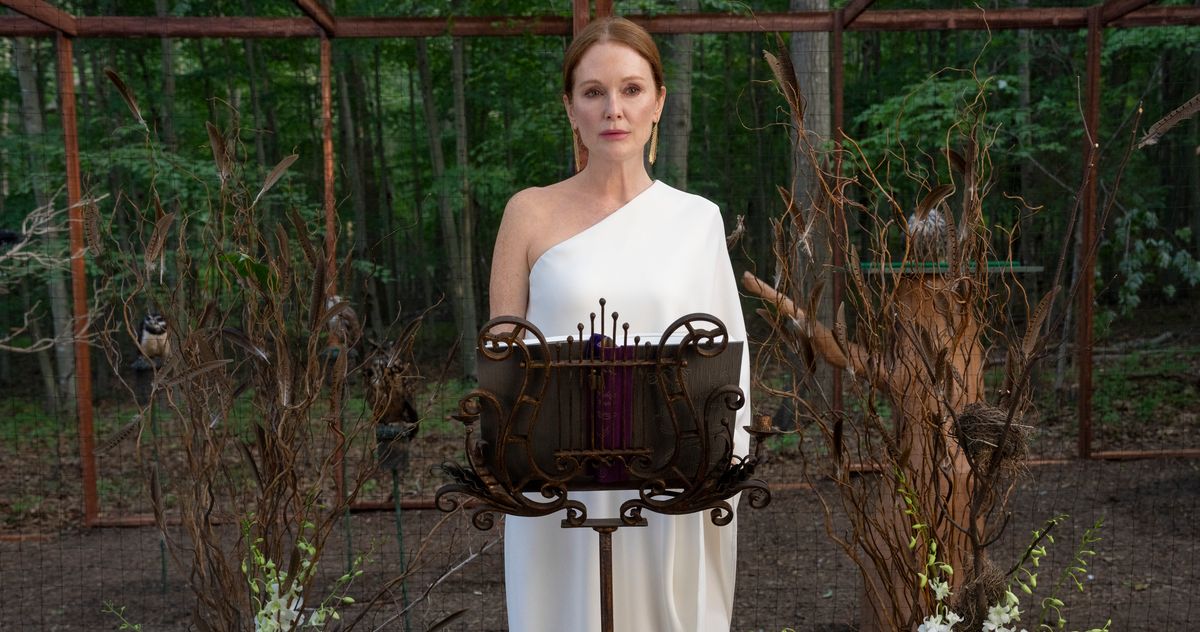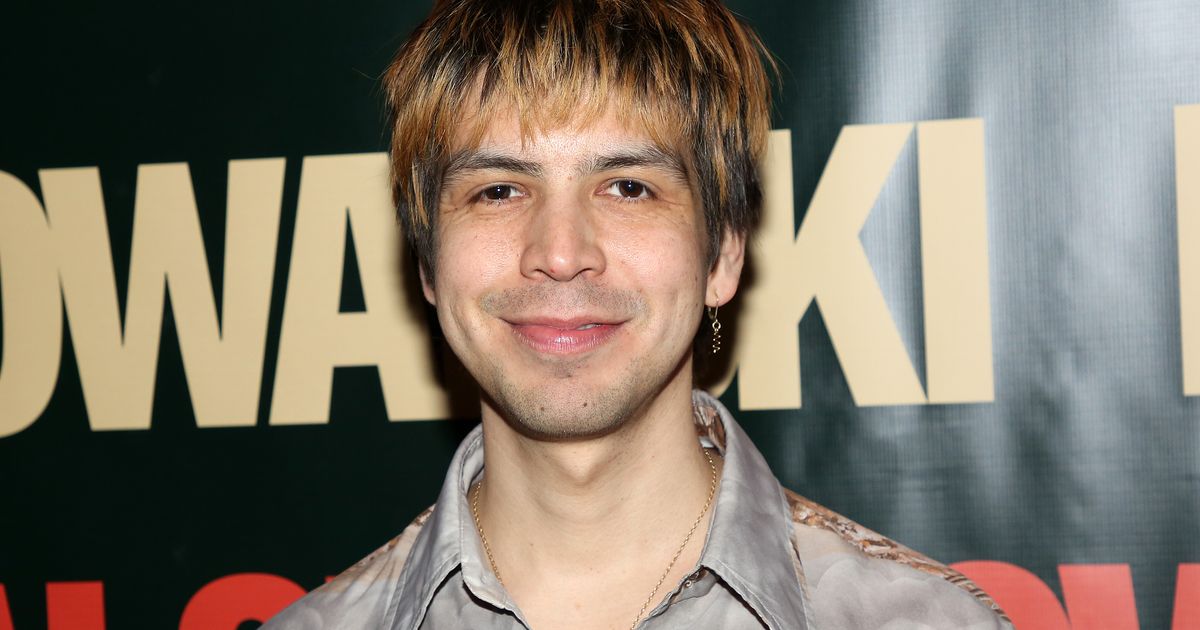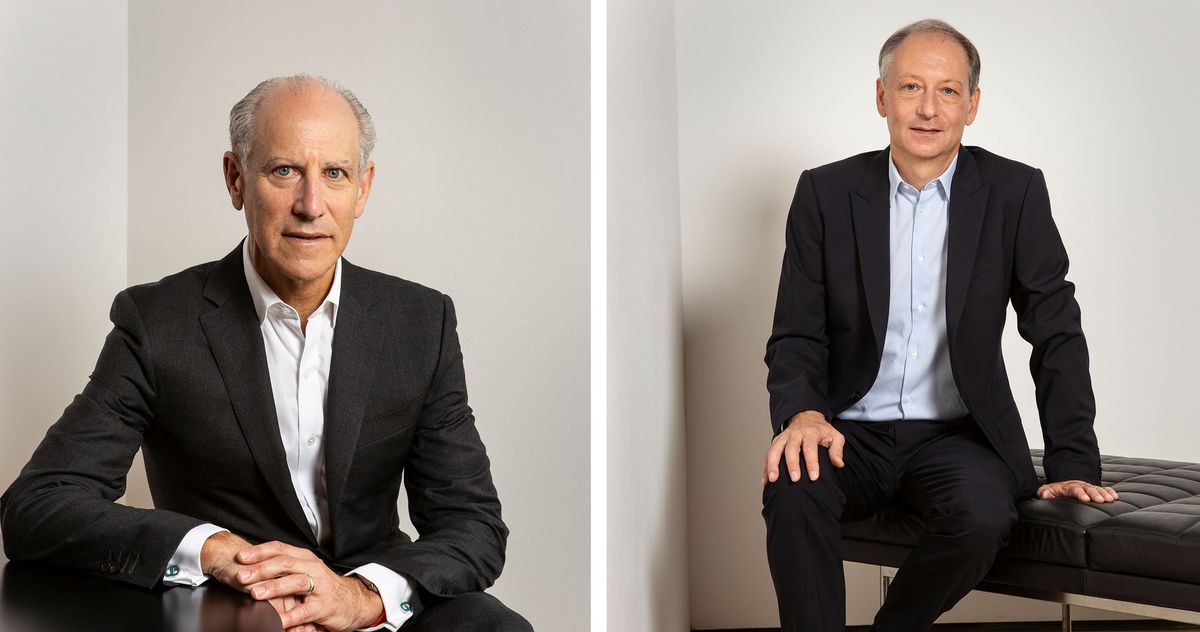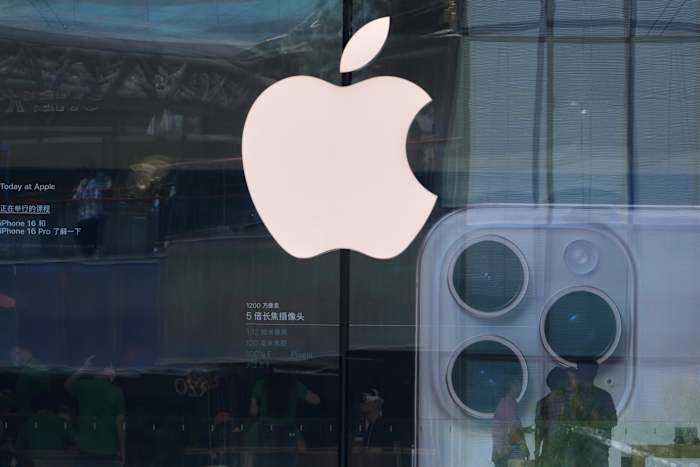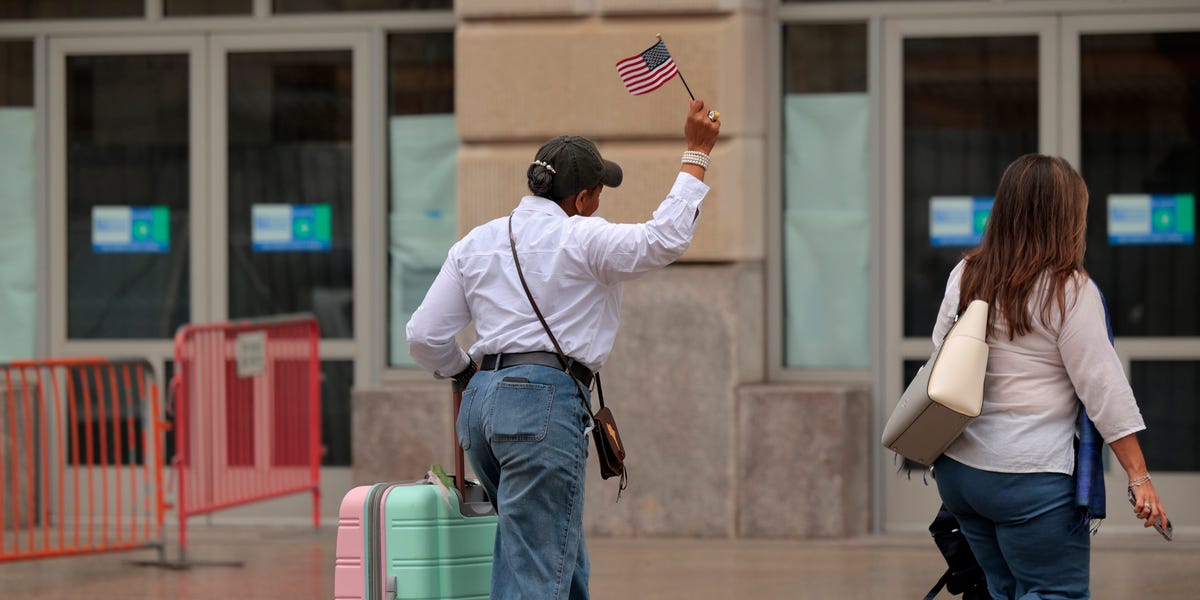Do you know anything?” the performance artist Marina Abramović asked over the phone in late March. For months, it had been the question on everyone’s mind: Who was going to lead MoMA now? Abramović had recently had lunch with the museum’s current director, Glenn Lowry, who would be stepping down this fall. She asked him explicitly. “I could get nothing out of him,” she said.
Since Lowry announced his retirement this past September, the subject of his successor had become, in the words of Kathy Halbreich, MoMA’s former associate director, “the question” among curators, art dealers, and critics. The new director — who would likely be paid, like Lowry, more than any other museum chief in the country and would live rent free in a luxury home above the galleries on 53rd Street — would be responsible for bringing in the many millions of dollars needed to keep the museum afloat and would shape one of the most important collections in the world. But more than this, their choices would have the power to reinforce and redefine the canon of modern and contemporary art for the years and decades to come.
Many art-world insiders hoped for an incoming leader who would be, as some put it, self-critical: who would interrogate the museum’s past decisions, in art and beyond, and who would be willing to push the boundaries of the canon, adding more work by women and people of color but also younger and newer artists, bringing exhibitions closer to the avant-garde.
A good number of observers hoped that Lowry’s successor would be young — or at least younger — and perhaps someone who wasn’t white. Many thought the museum would choose a woman. There was an all-star class of female candidates: as Arthur Cohen, a strategist for some of the biggest art institutions in the U.S., put it, “a new generation of women leaders who are really plugged into the Zeitgeist and extremely well positioned to navigate a transformative moment in society.” Many more observers wanted someone with a distinct, progressive vision for the museum’s future and for a clear break with Lowry’s reign.
The search for the replacement was veiled in secrecy — no one on the MoMA board would discuss it in any form. Though speculation and rumor were rampant, no definite picture of the front-runners emerged. (Thelma Golden, the venerated director of the Studio Museum in Harlem, who’d been the heir apparent for years, was still a favorite but apparently didn’t want the job.) Whispering voices by the bar at openings and in corner booths in restaurants uptown said that perhaps it would be Deana Haggag, the 38-year-old arts and culture director at the Mellon Foundation, or Sasha Suda, the new 44-year-old chief of the Philadelphia Museum of Art, or Suhanya Raffel, the director of M+ in Hong Kong, one of the biggest contemporary-art museums in the world. Sources said the answer was unlikely to be divulged before May.
Then, on the last Friday in March, in an effort to fend off leaks to the press, the trustees revealed their decision to staff in a surprise email. They’d held a hurried vote that morning with a unanimous result: The new director would be Christophe Cherix, the museum’s unassuming chief curator of drawings and prints.
The news landed with something like a thud. Cherix, a 55-year-old conceptual-art specialist, originally from Geneva, had been at MoMA for 18 years, but outside the museum, his name was unfamiliar. “Never heard of him,” J. Patrice Marandel, a former LACMA chief curator, posted on Facebook. “Who?” asked another curator.
This reaction seemed to be among the more favorable. Cherix was largely unknown not because he was an outsider or a wild-card choice; he was very much of the institution. Quite a few people noted that he was also, to paraphrase, yet another white man — one who, as the critic and CUNY Graduate Center art historian Claire Bishop wrote in an email, “even looks like the outgoing director? Are we allowed to say that?”
While some curators attract the spotlight — such as Scott Rothkopf at the Whitney, before he was elevated to director — Cherix had kept a low profile; he’d “lived his life in a library,” as Halbreich put it. Though his work was respected, it was understated, and he’d never held an administrative position at MoMA. Among what little was known about him was the fact that he was liked by Lowry. Many people believed he’d been selected to continue Lowry’s policies.
In one way or another, almost everyone I spoke with judged the decision as “safe.” Abramović meant it hopefully: “A secure choice,” she said. “Everything stays in-house.” But a significant group meant it bitterly. “It’s so predictable,” said Bishop. “‘Don’t Rock the Boat!’” In short, people weren’t thrilled.
“What a disappointing and unsurprising choice,” a former high-level MoMA employee told me. The staffer, like others, said they’d hoped for a director who would prioritize educational programming, community building, and relationships with artists. “I think this means that MoMA will stay the elitist institution so much of its audience doesn’t want it to be.”
MoMA is not the heart of experimental contemporary work — that will always live elsewhere, in smaller institutions, where new artists forge their way — but the museum’s choices set standards that influence the entirety of the art world. Under Lowry, this has meant expanding the canon in two directions: to include art made after the 1970s and art from all over the globe, establishing a permanent seat for non-European, non-American art into the future. Through the art the new director privileges — through acquisitions, exhibitions, and more — they would have the authority to alter the landscape of modern and contemporary art or to affirm the status quo.
Their choices would also influence how museums and art institutions run, including how they bring in money. Stephen Reily, head of a think tank on museum innovation, said that Lowry had “redefined the boundary between the museum and the market,” pioneering creative ways to sidestep traditional rules of museum funding.
The head of MoMA would also influence how other museums manage criticism and political pressure, including conflicts between their wealthy trustees and progressive impulses in the culture, often brought to the museums’ doorsteps by radical artists. In recent years, protesters have targeted MoMA, the Guggenheim, the Whitney, and others, calling for the ouster of board members whose fortunes (and sometimes personal lives) were linked to violence and wrongdoing. Artists have called for MoMA to cut ties with Ronald Lauder, a Republican megadonor and pro-Israel activist who funded a group responsible for xenophobic ads during the 2016 presidential campaign; Marie-Josée Kravis, whose husband’s private-equity firm is heavily invested in fossil fuels; and Paula Crown, whose wealth is in weapons manufacturing. In 2021, there was a particular fury over revelations that Leon Black, then chair of the board, had paid Jeffrey Epstein $158 million for “tax services.” When 150 artists, including Nan Goldin, Ai Weiwei, Nicole Eisenman, and Michael Rakowitz signed a letter demanding Black’s removal, Lowry seemed to ignore them entirely and used police to block protesters from entering the building. Black remains a trustee. (One former executive for the museum said, “The fact he still sits there tells you everything you need to know about MoMA, its board, and its senior leadership.”) Lowry’s protection of the trustees, and his choice to stonewall critics, including famous artists, was seen by other institutions as having in some sense cracked the code.
Lowry’s role at the museum has been, more than anything else, a CEO — one with graduate degrees in art history from Harvard but a CEO nonetheless. Over the course of three decades, he transformed MoMA from a handful of scholarly galleries with a $200 million endowment and a $60 million operating budget into a corporate juggernaut with a $1.8 billion endowment and an annual operating budget of $185 million: two and a half times that of the Guggenheim and three times that of the Whitney. He doubled the footprint of the museum, its attendance numbers, and the number of works and objects in its collection.
A substantial camp of artists, critics, and museum workers see Lowry as something of a world destroyer who has prioritized profit above all else and transformed MoMA into a cold, hierarchical, moneymaking machine. “People at the Met and at other museums used to call us the Evil Empire team,” one high-level former staffer told me. “Glenn was Darth Vader.”
There was hope for a new director who would revive MoMA as a living, evolving entity. Since the end of the modern-art movement in the 1970s, finding and holding relevance has been a central challenge of the museum. (In the 1980s, the art critic Robert Hughes called MoMA “a period room, a historical space that we can enter, look at, but no longer be part of.”) But its sensibilities had seemed to calcify in recent years. The museum was more insular; shows hardly nodded to the world outside its walls — even to debates in contemporary art. Some felt it had become tediously predictable: blue-chip name after blue-chip name. The museum was falling farther out of conversation. As the former high-level staffer put it, “MoMA has lost a lot of relevance, especially since the pandemic. Nobody really talks about them anymore in the same way. I hear much more about the Guggenheim; I hear much more about the Whitney.”
MoMA had had a world of forward-thinking museum chiefs to choose from. And in fact, according to sources who spoke anonymously in the days after the decision was made public, many of the serious candidates who were still in consideration in February and March, alongside Cherix, would be considered “diverse” hires with progressive track records. Among them was Franklin Sirmans, the director of the Perez Art Museum Miami, who, though 56, is Black and known for launching successful campaigns to acquire work by Black and Latin American artists. He’s also been agile in navigating hostile headwinds in Florida, where Governor Ron DeSantis cut the state’s entire arts budget last year.
Sarah Suzuki, MoMA’s 48-year-old associate director, the second-in-command under Lowry, was also in consideration in late stages. Suzuki started at the museum as a research assistant in 1998 and has deep experience as a curator — showing classic modernists, contemporary Asian artists, and more — and as an administrator. In her time on the business side, she directed MoMA’s most recent, and massive, expansion.
Jessica Morgan, the 56-year-old director of the Dia Art Foundation, who acquired Dia’s first ever works by Black artists and is said to run the place as an “artist-centric community,” seems to have been in consideration for Lowry’s job until the very end. According to a source close to the process, the headhunting firm hired by MoMA called Morgan five days before Cherix was announced as new director and told her, in the words of the source, that the board had “decreased their tolerance for risk” since her last interview. What risk meant in this context was not entirely clear, but Morgan was told, the source said, that she’d been disqualified because she lacked experience leading a large-scale institution. Notably, Cherix has never run any institution. (A MoMA spokesperson, reached after the announcement, said that the requirements for the role were defined in December.)
The source close to the process speculated that the risk here might have meant the chances of drawing the ire of the Trump administration. In recent weeks, a rumor has spread in the art world that the White House has plans to target a specific list of museums — penalizing them for “woke” practices with censorship, funding cuts, and endowment taxes. On March 27, the day before Cherix was announced, Trump signed an executive order that seemed to confirm these anxieties, calling for the removal of all “improper ideology” from the Smithsonian Institution, including “anti-American,” “race-centered” material.
MoMA does not accept government funding and is hardly a bastion of radical revisionist thought (“Mellon and Ford are the hotbed of DEI funding,” one former high-level MoMA staffer said), but a bit of a cold wind has certainly come through the museum doors. Halbreich told me that prominent art institutions are already using code words, like community, to talk about diversity.
Whether fears of the presidential administration had any effect on MoMA’s decision, and whether Cherix’s identity as a man who “looks like” Lowry mattered in any way to the board, the result was familiar.
Some reportedly greeted it with a type of relief: Insiders had been heard, in the words of one source, saying that “it was one of the biggest things the museum could do—to not feel obligated to hire someone with identity-based concerns. To make the selection ‘completely meritocratic.’”
For others, like Bishop, “the takeaway” was that “ladies are allowed to run the margins. Brooklyn, Queens, Studio Museum. But only the guys are trusted to handle the mainstream and the megabucks (Met, MoMA, Whitney, Frick).”
“It’s the same sexist, bullshit story that’s as old as time,” the source close to the search said. “Wanting a guy in a suit. That’s leadership.”
In the days after Cherix was announced, insiders agreed that his tenure would likely, in some way, carry Lowry’s legacy forward. Lowry himself had been pleased with the decision — “very proud,” in Halbreich’s words. He might have had his eye on Cherix years ago, in 2010, when he recommended that Cherix complete a fellowship at the Center for Curatorial Leadership: essentially a training program for future museum directors, with classes on negotiation, governance, finance, taught by Columbia Business School professors and MoMA trustees. (Sarah Suzuki also completed this program.)
Cherix has said, according to Halbreich, that he plans to defer to Lowry for the foreseeable future: “Glenn is the leader until he walks out.” Laura Hoptman, executive director of the Drawing Center and a former colleague of Cherix’s at MoMA, linked the perspectives of the two men, saying, “Both are polyglot, cosmopolitan, and curious about culture internationally.”
Cherix, who declined to speak with me and who has a light footprint in the public record, is married to artist Amy O’Neill, who works with film, installation, and drawing. In his personal demeanor, he seems to be a far quieter presence than Lowry. “He’s not a flashy personality,” the Princeton art theorist Hal Foster told me. “He’s soft-spoken. He’s not as glamorous as Glenn. But I think that might be good in this moment.” Cherix, he said, was “stable at a moment of radical instability.”
Halbreich believes Cherix has so far been underestimated. “He looks like a man in a suit,” she said. (In fact he looks like a Swiss banker — his twin brother’s metier.) “But underneath, there is a roiling interest in the most rule-breaking artists.”
Cherix is certainly drawn to art off the beaten path, seeming to be most interested in conceptual work by cerebral artists. In 2018, he curated a mid-career survey for Adrian Piper, known for challenging work about race and subjectivity and for her dual specialization in Kantian philosophy. In 2016, he put on a retrospective for the late Belgian artist Marcel Broodthaers, who at the time was a star only in niche corners of Europe. One place where Cherix has definitively left his mark on MoMA is in its conceptual-art holdings: Over the years, he’s beat out other institutions to bring three major collections to the museum, including a 3,000-work trove of art and archives from Fluxus, the anti-elitist, anti-commercial movement of the 1960s and ’70s. Maybe unsurprisingly, his exhibitions have rarely been blockbusters, though his shows for Ed Ruscha and Yoko Ono came close. Overall, his exhibitions tend to catalogue history and bring overlooked works into the existing boundaries of the canon.
Robert Storr, a former MoMA curator, later a dean of the Yale School of Art, told me that Cherix had wanted the top job at MoMA for a long time. “I know he was angling for it,” he said, weeks before the announcement. “He was very clear about that in conversations with me.” Storr wouldn’t go as far as Halbreich in his praise, but he said that Cherix “has skills and experience that Glenn never had, and he’s made pretty good shows.”
What does this all mean for the future of MoMA? Hoptman said that Cherix “sees contemporary art as a vital, living thing that morphs and changes and has the potential to have a positive impact on our lives.” But no one I spoke with would hazard any real predictions about his coming tenure and impact.
Some discussed the shifting landscape he would face. András Szántó, a cultural strategist for major museums, universities, and foundations, said that over the next 30 years, the “digital footprint” of museums would become as important as their physical spaces. Some institutions are already investing in AI art, NFTs, and virtual-reality experiences, and MoMA has taken steps in this direction. In 2023, it acquired a critically panned AI work, by Refik Anadol, which employed machine learning to trawl through 200 years of art from the museum’s collection and use it to generate a psychedelic installation. MoMA then sold NFTs related to the work that generated, according to Lowry, a seven-figure sum for the museum. The move made some wary; it brought on what journalist Julia Halperin called, in a talk with Lowry, “a generalized feeling of ‘yuck’” at the appearance of a nonprofit museum prioritizing sales. Others were feared that the museum might let tech disruptors—increasingly conflated with artists—in through the front door.
Cherix will also be handed a massive fundraising challenge. Securing the cash the museum needs and wants is likely to get harder in the coming years: Younger donors — the recipients of the impending $124 trillion great wealth transfer — so far don’t rank arts patronage high on their list of priorities; social causes currently take precedence over cultural ones. The new director will need to appeal to this new generation.
On the second Tuesday in April, at the first MoMA opening after Cherix was announced, Lowry, in dressy sneakers and a French-knotted scarf, greeted guests near the entrance. The Nigerian American artist Odili Donald Odita had painted the walls and columns of the museum’s lobby in prismatic geometric patterns. The lobby was filled with collectors, writers, and the artist’s friends. I ran into a journalist standing at a table in the back and asked her opinion of the succession news. “I loved the Ed Ruscha show,” she said — Cherix’s 2023 retrospective. “But at this place you have to be a CEO. Does he do that?”
It may be hard to remember now, but when Lowry was brought on in 1995, he wasn’t well known himself. He also wasn’t considered remarkably qualified. At the time, he was a 40-year-old director of a Canadian museum — the Art Gallery of Ontario — with no expertise in modern art. His field was Islamic art history. He had a reasonably connected, patrician background — he was a former competitive downhill skier; educated at a boarding school, Williams College, and Harvard — but he was not the first, or even the fifth, pick for the job.
The era’s preeminent directors had all turned it down. Tate director Nicholas Serota, Philadelphia Museum of Art director Anne d’Harnoncourt, and three other heads of major U.S. institutions had all said “no,” perhaps because, as the Art Newspaper speculated at the time, none were interested in the task that had been set by the board: raising $100 million for MoMA’s endowment and spearheading the purchase of a new building to display its growing contemporary collection. Morale at the museum at that time seems to have been low: Employees were poorly paid, and union negotiations had stalled. And back then, among real art people, fundraising was considered drudgery.
But Lowry had unusual ambitions. “He doesn’t want to be a curator,” Agnes Gund, then chair of the board, said before he began. “He wants to be an administrator.” Lowry agreed to come on at a chief-executive-level salary (the exact amount is unclear), and, the public would learn years later, he received an additional, secret payout: In 2007, the New York Times revealed that MoMA board members and other donors had funneled money to Lowry in an undisclosed trust from 1995 to 2003 — adding up to $5.3 million in total. This raised concerns about his obligations to the trustees, who could, in theory, profit from Lowry’s choices. Picking one artist over another to exhibit could raise the value of trustees’ own private collections.
Early in his tenure, Lowry began restructuring the museum to resemble a private-sector company, a purveyor of luxury goods. When he arrived, the chief curators had extraordinary freedom over their exhibitions and set their own budgets. But, according to a later New York Observer report, Lowry moved swiftly to rein in their power, layering a set of deputy directors above them who would manage the finances and have final say over their priorities.
In the late ’90s, under Lowry, the museum built a website for its design store and hired a high-paid marketing team that included — to much internal horror — a Bloomingdale’s executive, a former “merchandising manager.” (“It went around the building like wildfire,” an unnamed curator told the Observer in 2000. “It was a knock on the head … some crass corporate entity coming in.” The same article described the overhauled museum as “streamlined” and “cash-fueled”: “Just call it McMoMA.”)
Lowry’s new development director was, in a first for the museum, paid more than any of the top curators, and he gave a series of raises to the museum’s chief financial officer, James Gara, and his salary, too, surpassed that of the curators. (Today, as chief operating officer, Gara is the second-highest-paid MoMA employee, earning $952,000 before perks. The highest earning curators make around $500,000, all in. Lowry’s own package adds up to about $2.2 million.)
Much of the museum staff was outraged. A union for lower-paid employees went on strike twice in those years; Lowry had refused to budge on wage and health-care demands. Curators, too, had complaints. According to Storr, then a curator of paintings and sculpture, Lowry initially agreed not to meddle in the modern- and contemporary-art departments, where he lacked expertise, but the promise didn’t hold. The budget for an exhibition Storr had been working on for three years, on postwar European art, was summarily slashed. As Storr saw it, Lowry was too greedy. “He saw everything as a zero-sum game,” he said.
Storr quit after seven years in the new regime. “I left before he could ensnare and torture me as he did so many others,” he said. He claimed that Lowry intentionally pitted staff against one another “by playing favorites, by dangling prizes.” Some say Lowry was jealous of curators. (A few allege that he pushed out Kirk Varnedoe, the former head of paintings and sculpture — who was at one time thought of as the brightest among them — when Varnedoe was diagnosed with cancer in 1996, after 16 years at the museum. MoMA has previously denied this.)
Most former staffers I spoke with agree that the work environment under Lowry was cutthroat. “The level of excellence that everyone demanded all the time is the reason why the exhibitions can be as good as they are,” a former employee told me. “And every single exhibition looks great.” But it also made the curators extremely territorial: “There just seemed to be all these machinations toward the top,” the staffer said. They recalled curators taking up cycling because Lowry loved to race. The joke was that you couldn’t beat the boss but you also couldn’t lose by too much: “He might not respect you.”
In 2001, MoMA began its first expansion and renovation under Lowry, designed by the architect Yoshio Taniguchi. It was completed three years later at the astonishing cost of $450 million. Then, just a decade later, the museum broke ground again: another expansion and renovation, another $450 million. (The project involved, among other controversies, buying and demolishing the beloved American Folk Art Museum building next door.)
Storr described Lowry as having “an appetite altogether for power and for money — not for art.” But throughout his seemingly acquisitive run, Lowry has surely brought innovative art to the institution. Between 1999 and 2006, he was the force behind the museum’s merger with the Queens art institution PS1, where MoMA began showing experimental contemporary work. Today, the young curators at PS1 — a semi-independent entity, with its own director and board — often turn up intriguing new talent from beyond the megagallery ecosystem.
Following the second renovation, in 2019, Lowry also oversaw efforts to bring new life to the museum’s permanent collection, recontextualizing older works within what curator Ann Temkin called the “pluriverse” of modern art, beyond the white and European. A painting by Faith Ringgold reimagining Picasso’s Guernica as a race riot now hung alongside Picasso’s Les Demoiselles d’Avignon; Mondrian’s jazzy late masterpiece, Broadway Boogie Woogie, was juxtaposed with works of Latin American abstraction. The public, Temkin told the Art Newspaper at the time, had come to see MoMA as an “authoritative, institutional body.” Part of the purpose of the new displays was to “recapture the initial sensibility of the museum, which was one of being challenging and provocative.”
This tension, between authority and provocation, is one of a few defining paradoxes of the museum, built into its DNA from the very start. MoMA and modernism — in the sense of experimentation and the rejection of tradition — have never been easy bedfellows. It was three of New York society’s grandest dames (Lillie Plummer Bliss, Abby Aldrich Rockefeller, and Mary Quinn Sullivan) who founded MoMA, in 1929, and dedicated the space to a caste of anti-authoritarian bohemians, including Picasso, Marcel Duchamp, and Francis Picabia.
The interplay between counterculture and the capitalists — and their strife — continues to define the museum. What this has meant for the museum’s art has changed over time; what it will mean in the future is uncertain.
In hiring Cherix, MoMA had made what was, in some ways, a deeply predictable decision. Despite a new 40-year-old president of the board — Sarah Arison, heir to the Carnival Cruise fortune, who donates to Democrats — the board’s composition overall remains markedly old and conservative. “I don’t think MoMA wants to change,” one person close to the search said. The trustees, they said, just wanted someone “to follow their lead, not do anything different creatively, and just keep to the path.”
Rather than being motivated by fear of the presidential administration, the board, some noted, may have simply made the choice it wanted to. “The donor class has gone full Trump,” the art critic Nikki Columbus said. “I doubt much of MoMA’s board is any different.”
What power the director really has, independent of the trustees, is also limited. A leader who bucked board expectations could be removed. Bishop put it this way: “It really doesn’t matter who the next director is. Nothing significant will shift at MoMA while it remains at the beck and call of its billionaire trustees. MoMA is the corporate museum par excellence, not an institution by and for the public.”
Maybe it was all overdetermined from the start. But the real outcomes of the decision are yet to be known.
Hal Foster of Princeton said that he hoped the museum would continue to explore the “problems around race and empire” that intersect with modernist and contemporary art. “That will be obviously in the face of nativism, in the face of anti-DEI measures,” he said. “But I think it’s incumbent upon Christophe to continue that fight.” What had happened at the Smithsonian was, in his view, “just the beginning of an expanded culture war that will involve other museums.”
No matter a director’s ambitions for their tenure, Szántó said, they are subject to “tremendous pressure to become a custodian of the cultural status quo.” In order to be great, he said, Cherix would need to listen to artists, especially young artists, and he might need to take sides: “If you have a choice between sitting with a 70-year-old billionaire or a 23-year-old artist, in the end, how are you going to use your time?”

